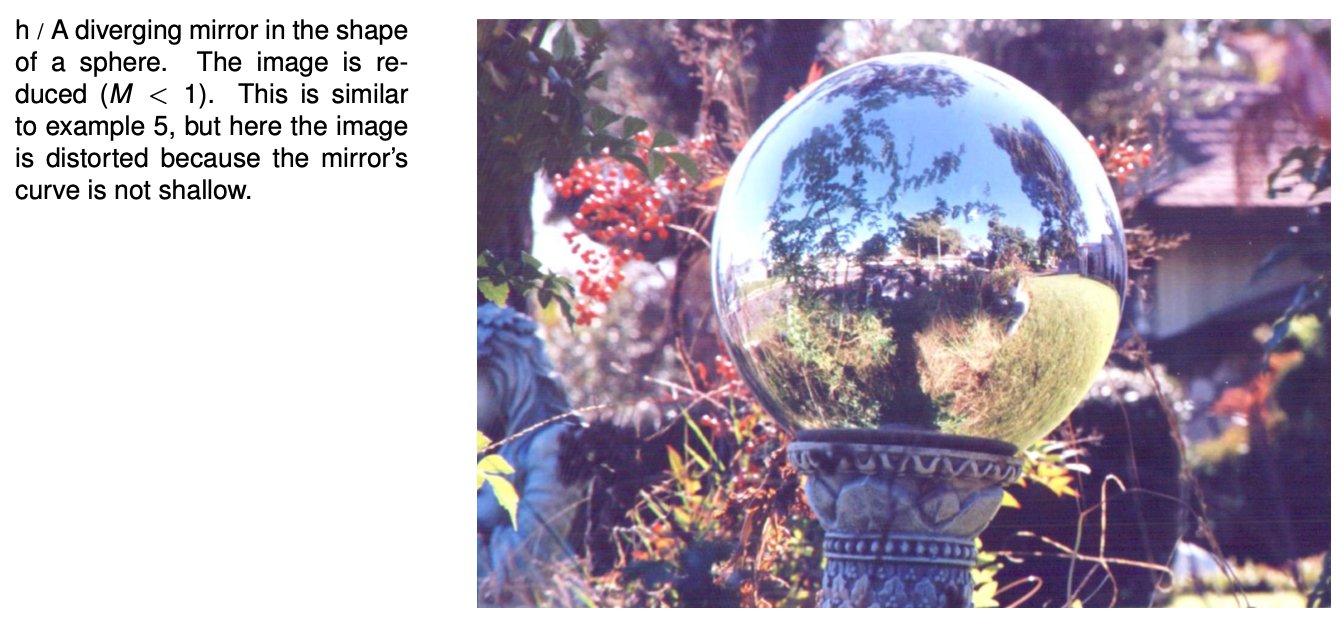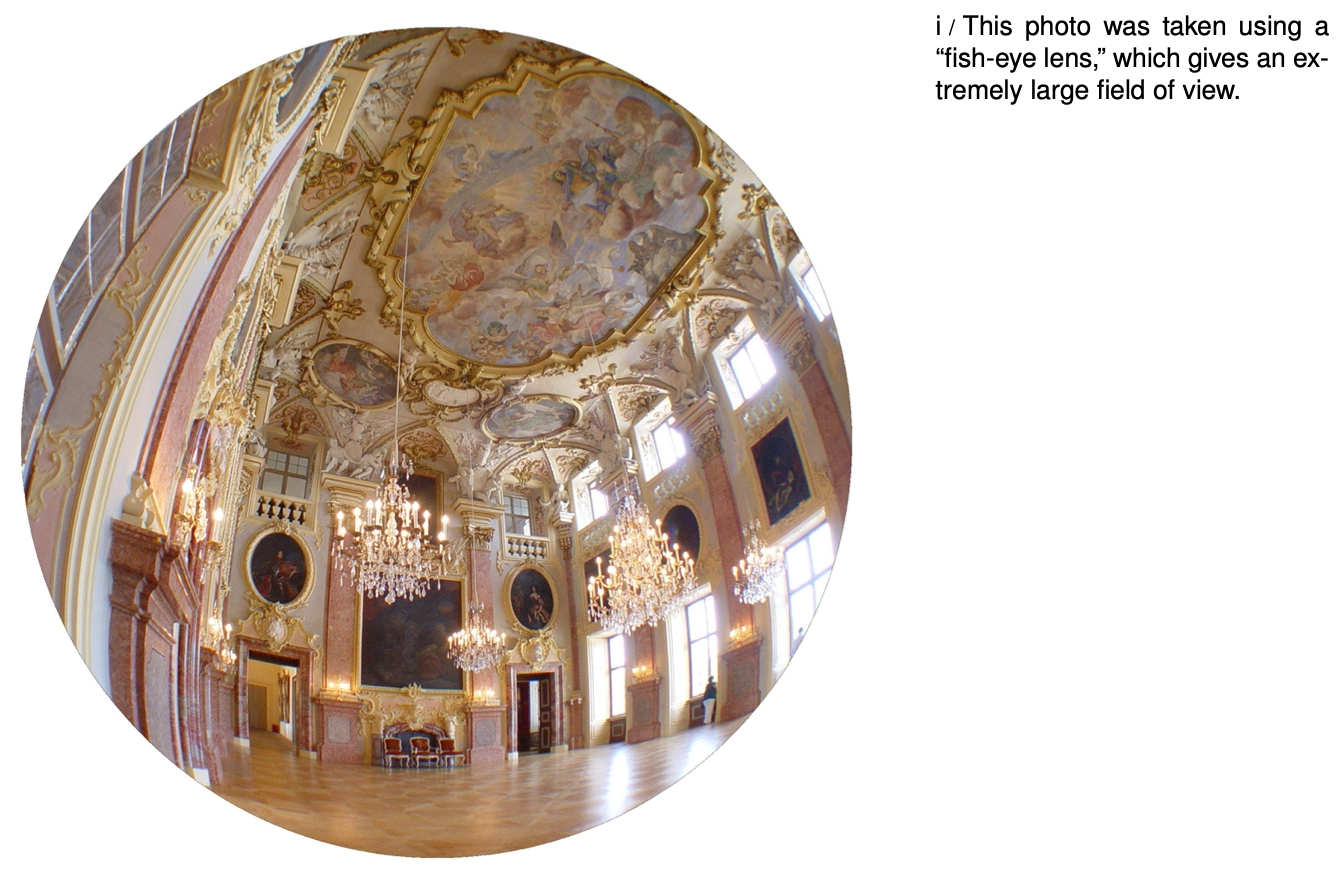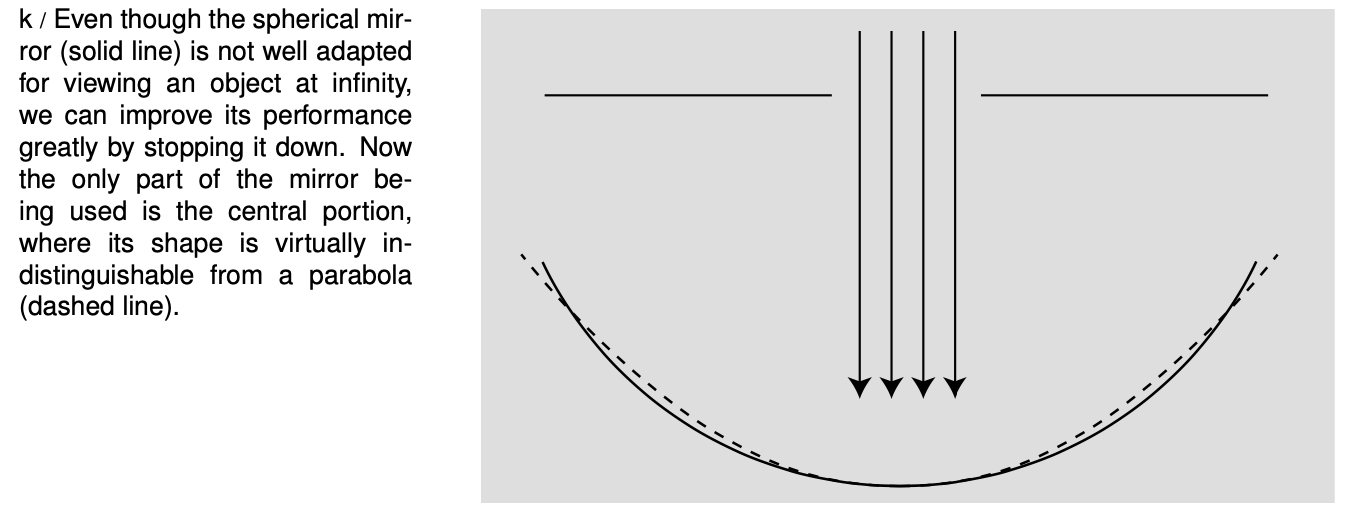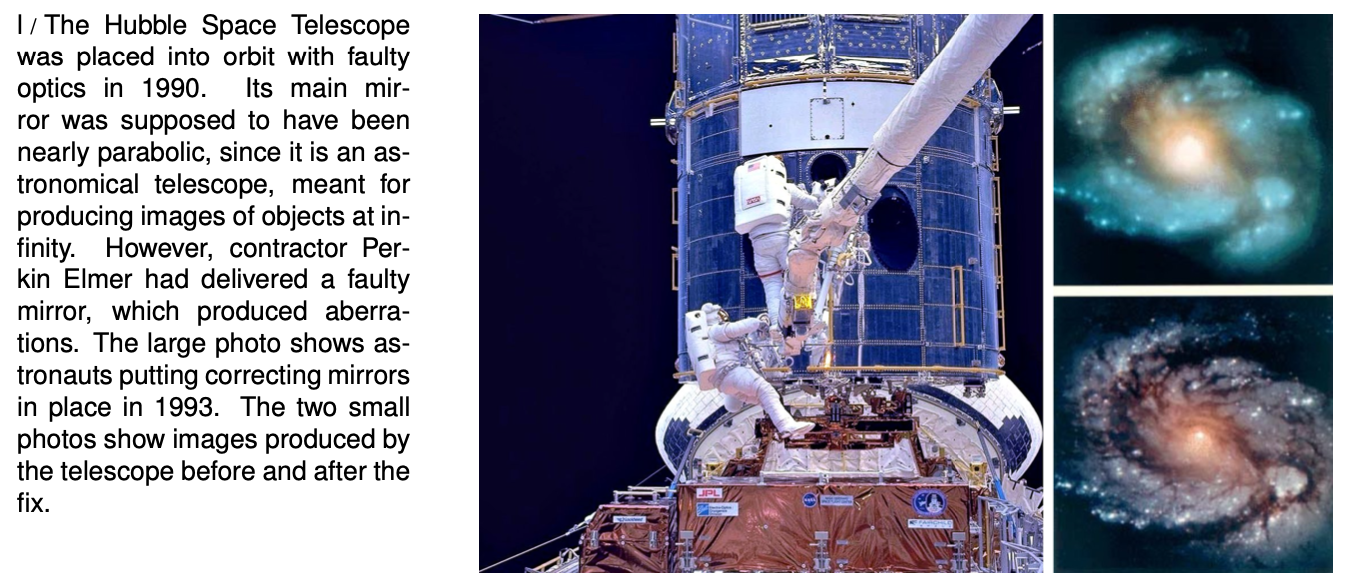LM 30.3 Aberrations Collection
Tags | |
UUID | 1eee0945-f145-11e9-8682-bc764e2038f2 |
30.3 Aberrations by Benjamin Crowell, Light and Matter licensed under the Creative Commons Attribution-ShareAlike license.
30.3 Aberrations (optional)

An imperfection or distortion in an image is called an aberration. An aberration can be produced by a flaw in a lens or mirror, but even with a perfect optical surface some degree of aberration is unavoidable. To see why, consider the mathematical approximation we've been making, which is that the depth of the mirror's curve is small compared to and . Since only a flat mirror can satisfy this shallow-mirror condition perfectly, any curved mirror will deviate somewhat from the mathematical behavior we derived by assuming that condition. There are two main types of aberration in curved mirrors, and these also occur with lenses.
(1) An object on the axis of the lens or mirror may be imaged correctly, but off-axis objects may be out of focus or distorted. In a camera, this type of aberration would show up as a fuzziness or warping near the sides of the picture when the center was perfectly focused. An example of this is shown in figure i, and in that particular example, the aberration is not a sign that the equipment was of low quality or wasn't right for the job but rather an inevitable result of trying to flatten a panoramic view; in the limit of a 360-degree panorama, the problem would be similar to the problem of representing the Earth's surface on a flat map, which can't be accomplished without distortion.
(2) The image may be sharp when the object is at certain distances and blurry when it is at other distances. The blurriness occurs because the rays do not all cross at exactly the same point. If we know in advance the distance of the objects with which the mirror or lens will be used, then we can optimize the shape of the optical surface to make in-focus images in that situation. For instance, a spherical mirror will produce a perfect image of an object that is at the center of the sphere, because each ray is reflected directly onto the radius along which it was emitted. For objects at greater distances, however, the focus will be somewhat blurry. In astronomy the objects being used are always at infinity, so a spherical mirror is a poor choice for a telescope.

A different shape (a parabola) is better specialized for astronomy.

One way of decreasing aberration is to use a small-diameter mirror or lens, or block most of the light with an opaque screen with a hole in it, so that only light that comes in close to the axis can get through. Either way, we are using a smaller portion of the lens or mirror whose curvature will be more shallow, thereby making the shallow-mirror (or thin-lens) approximation more accurate. Your eye does this by narrowing down the pupil to a smaller hole. In a camera, there is either an automatic or manual adjustment, and narrowing the opening is called “stopping down.” The disadvantage of stopping down is that light is wasted, so the image will be dimmer or a longer exposure must be used.

What I would suggest you take away from this discussion for the sake of your general scientific education is simply an understanding of what an aberration is, why it occurs, and how it can be reduced, not detailed facts about specific types of aberrations.

30.3 Aberrations by Benjamin Crowell, Light and Matter licensed under the Creative Commons Attribution-ShareAlike license.
Calculators and Collections
- Comments
- Attachments
- Stats
No comments |
